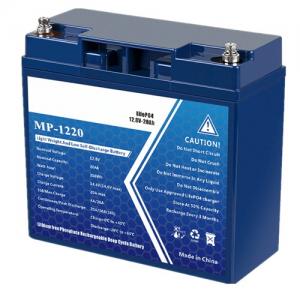Why can lithium iron phosphate batteries achieve 12,000 cycles?
The cycle performance of a single cell is mainly affected by three aspects: one is the material system or cell design; the other is the reliability of cell processing; the third is the working conditions and conditions of the battery charge and discharge cycle; the fourth is the test accuracy. If you go to the module and system level, you should also consider the consistency of cell processing, the reliability of BMS, the reliability of welding when connected in series and parallel, whether you have an equalization function, and so on.
The question asked by the questioner is a statement, or some common cycling method of lithium iron phosphate batteries, after reaching 12,000 cycles, the discharge capacity is still more than 80% of the initial capacity, or according to The trend of the cyclic curve can reach such a state. We tentatively think that it is the situation at the cell level.
For the above-mentioned influencing factors, the descriptions are as follows:
First, the material system of the cell, or the design of the cell. Explain from the following aspects:
1. The theoretical cycle life of lithium iron phosphate material is very long, mainly because the lattice stability of lithium iron phosphate is good, and the insertion and extraction of lithium ions have little effect on the lattice, so it has good reversibility. But this is theoretical. In fact, the performance of each material manufacturer's raw materials, processing technology, coating or modification process is very different, and even relatively poor materials can be cycled for hundreds of weeks. No. In addition, there will also be a problem of consistency in the material processing process; therefore, in order to have a good cycle life, it is necessary to select lithium iron phosphate materials with excellent cycle performance and no problems in processing;
2. The capacity, suitable compaction density, required conductive agent and binder content of different lithium iron phosphate materials are also very different, and some must be used with carbon-coated aluminum foil; therefore, the most suitable positive electrode for this material must be selected. Parameters such as ratio and compaction density;
3. Other materials in the cell, the negative electrode, electrolyte, diaphragm, and even the current collector, as well as the life of the packaging material, will affect the cycle life of the cell, which will not be repeated here, that is, other materials except the positive electrode, Materials and design parameters that match the life of the positive electrode lithium iron phosphate or even exceed the life of the positive electrode must be used;
4. Different cell rate performance designs also have a great impact on the cell cycle life. For cells with high energy density, the life of high rate cycles will generally be poor; therefore, it is necessary to formulate a cycle condition that is compatible with the cell’s required cycle life. matching design.
The above four points are indispensable.
Second, the reliability of cell processing. This is more complicated. In many cases, the basic parameters such as capacity and internal resistance of a cell are qualified, but the processing process of this cell may not be without problems. Here I will focus on the following points:
1. The dispersion effect of the positive and negative electrode slurry, and the processing defects of the pole piece; poor dispersion of the slurry will affect the cycle of the cell, which is well known; the processing of the pole piece is a problem that cannot be completely avoided, and each process has Such surface defects may occur, and various abnormal areas of point, wire, and surface have a great impact on the cycle life of the cell, and with the current mass production technology, it is impossible to completely eliminate it, only to ensure that there is no major impact. to security deficiencies;
2. If it is a wound cell, or even some laminated cells, the flatness of the entire cell and the deformation of the winding core will have a great impact on the cycle life. Among them, the winding tension and hot-pressing flatness will all be affected. great influence;
3. The residual amount of electrolyte and the film formation of the negative electrode will also affect the cycle life; this includes the temperature of high temperature formation, formation current, whether the bubbles are completely removed, or whether too much electrolyte is negatively pressured during formation Extraction will affect the lifespan.
Therefore, the cycle life of the cell is good, and every detail of the entire processing process must be controlled in place to ensure that there is no problem, and this control should not only look at some superficial parameters, but should be every detail of the equipment and products.
Third, cycle conditions and conditions; mainly include the following aspects:
1. Charge-discharge current and charge-discharge depth, it can generally be considered that within the normal current in place, the larger the charge-discharge current, the greater the SOC at the end of charge, the lower the SOC at the end of discharge, and the worse the cycle life;
2. Temperature, no matter whether the temperature is too high or too low, will have a negative impact on the cycle performance, and this temperature should be the actual temperature inside the cell, not just the temperature of a certain part detected;
3. Under the condition of external force, applying a certain force to the cell can effectively improve the adhesion between the pole piece and the diaphragm during the cycle and prolong the life. However, excessive force will affect the diffusion of the electrolyte and reduce the life.
Fourth, test accuracy.
This is mainly related to the test machine or connection. For example, the actual output current is too large or small during the test, the voltage is high or low, and the connection point of the wire is heated, which will affect the life of the test, and may even have a great impact. The effect, the difference of thousands of weeks.





